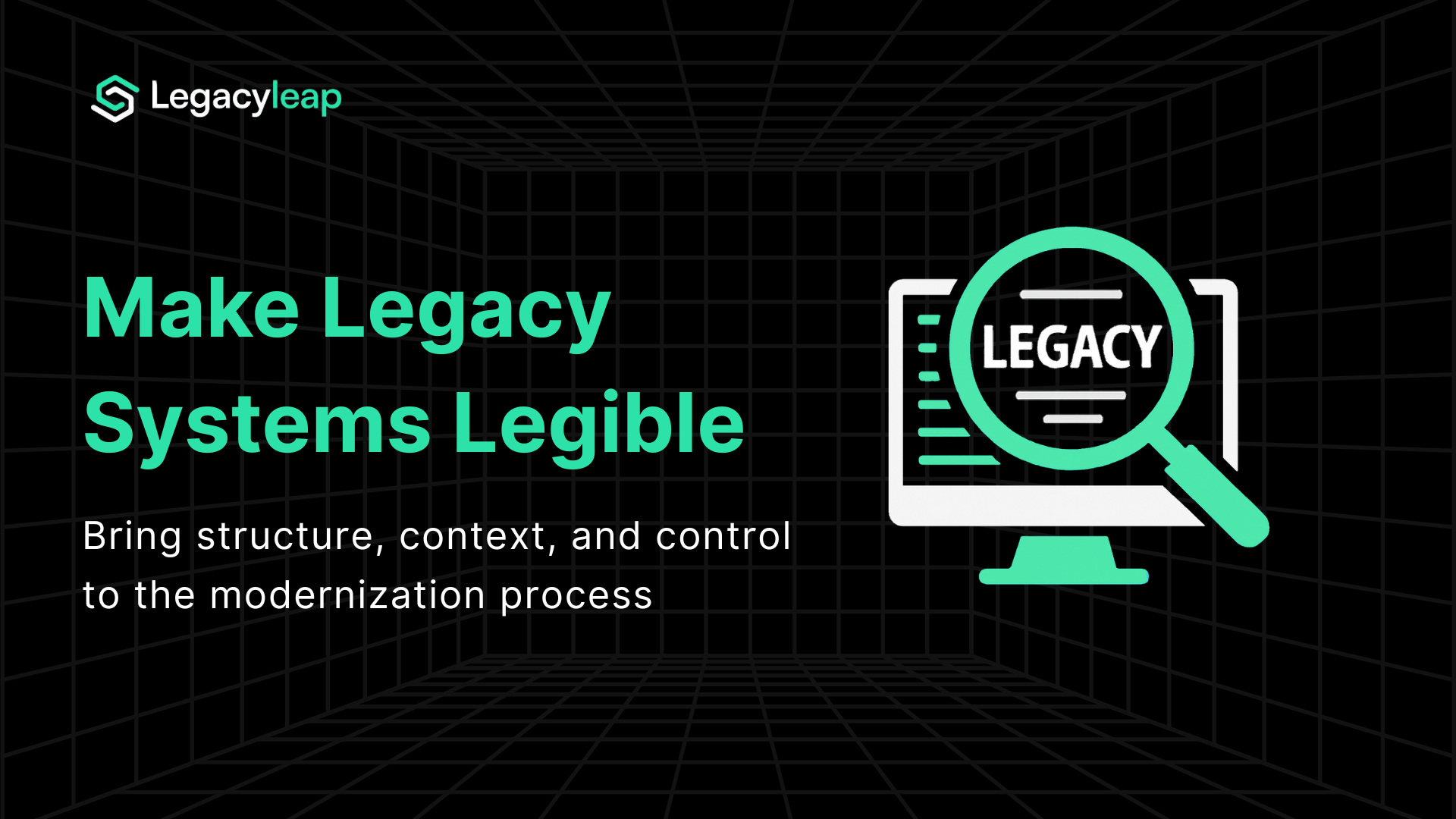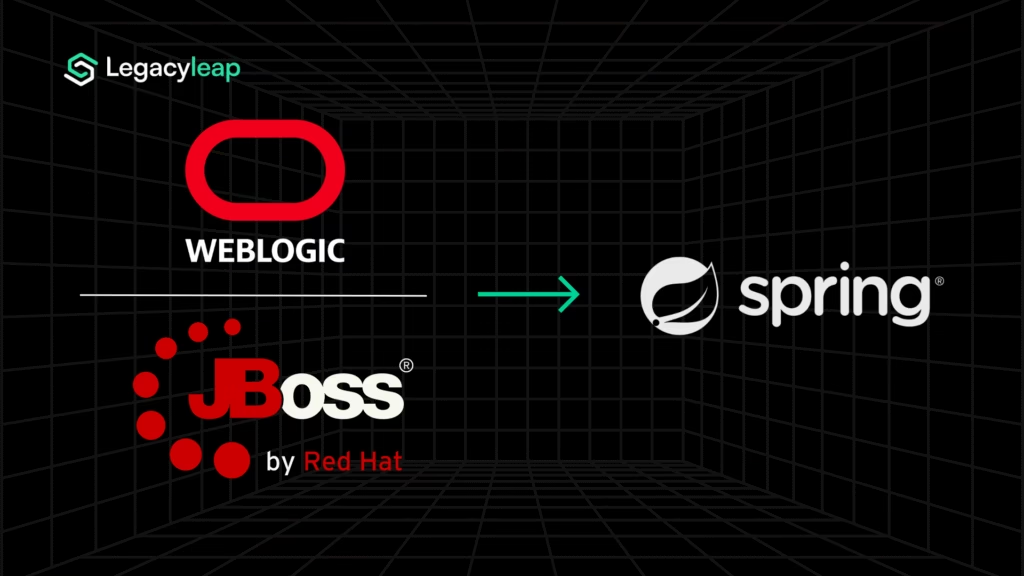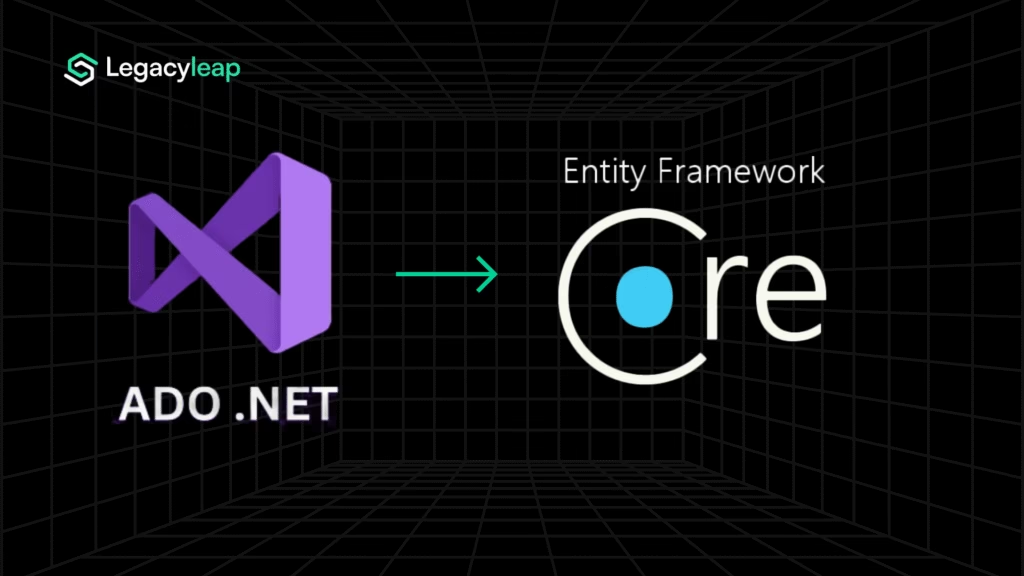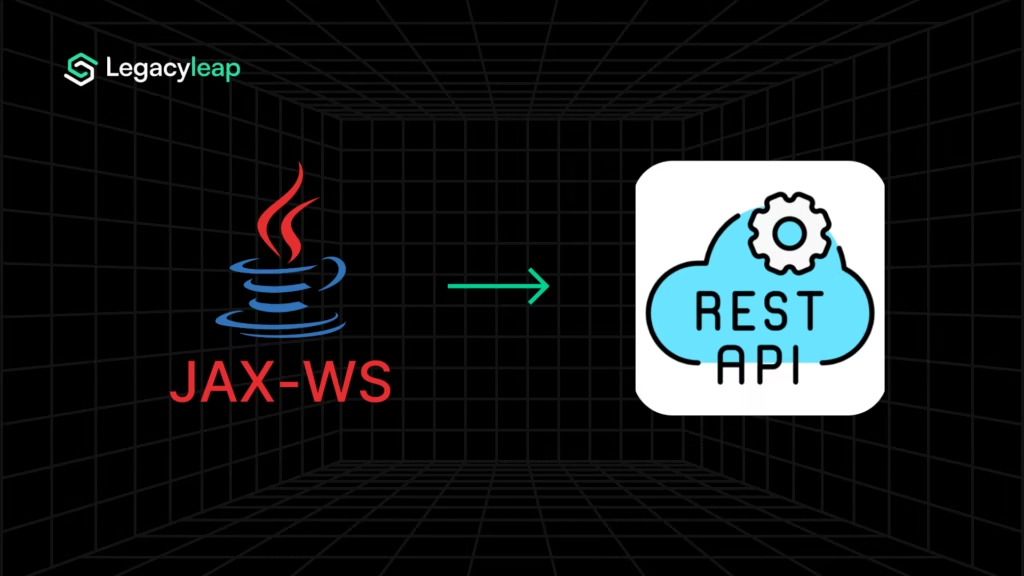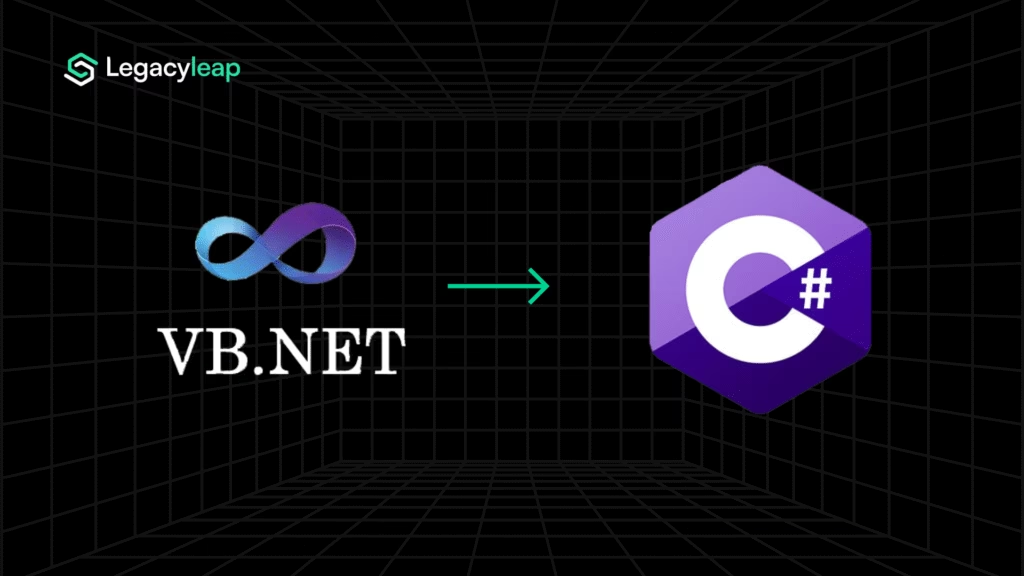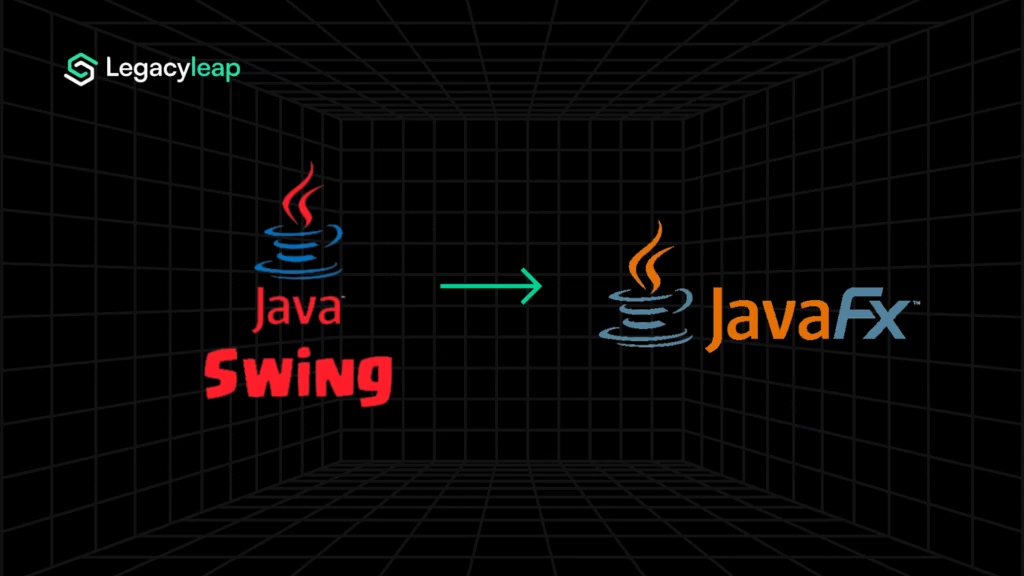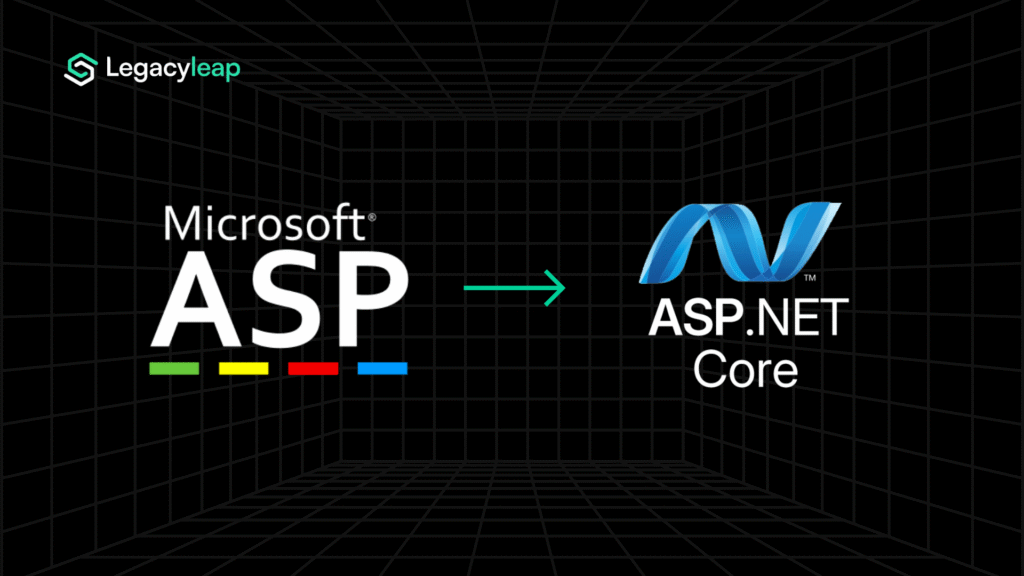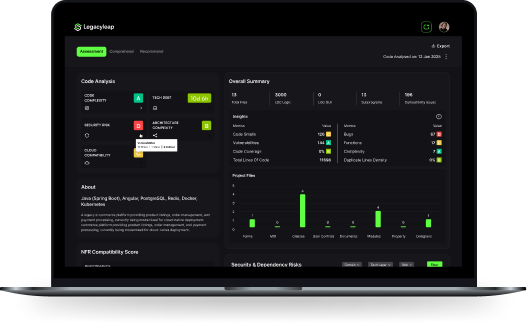Introduction
Across the enterprise, Gen AI is being applied to improve productivity, accelerate delivery, and assist developers with faster code generation. These are important gains, but they’re surface-level. They address the output, not the foundation.
Because productivity was never the real constraint.
The constraint has always been legacy systems. Systems that have evolved over decades without documentation. Systems built by teams that no longer exist. Systems that are critical to business continuity, but too fragile to touch without introducing new risk.
Modernization makes those systems usable again. But intelligence — true, structured, explainable intelligence — is what makes them strategically valuable.
At Legacyleap, we believe that the most powerful application of Gen AI in the enterprise isn’t in generating code. It’s in understanding what already exists. Turning source code into a living, queryable asset. Making legacy systems interpretable so they can be governed, modernized, and extended with confidence.
This is the role of Source Code Intelligence. And it changes what modernization can actually mean.
From Modernization to Intelligence
“Current AI coding agents often provide only “anemic” context, typically look[ing] at the source code locally—at best, at the application level—and they’re building fragments of code by passing some internal lines into the prompt”. The core idea driving Source Code Intelligence is to build a very rich context and intelligence around how code is represented from multiple perspectives.”
Most modernization platforms are designed to help enterprises migrate stacks. They assist with rewriting services, cleaning up syntax, and moving workloads to the cloud. The outcome is better infrastructure. A faster deployment pipeline. A reduction in legacy tech debt.
All of that is necessary, but it’s not the full picture.
Because for large enterprises, the value isn’t just in transforming old code into new code. It’s in recovering context. Business rules. System logic. Architectural decisions. The kinds of things that live deep in the codebase, accumulated over decades, and never written down.
At Legacyleap, we’ve built the platform to extract structured, system-level intelligence from it.
We call this Source Code Intelligence: the ability to model and represent your systems in a way that’s machine-understandable, human-verifiable, and architecturally complete.
It’s not just about transformation. It’s about comprehension. And it’s that shift, from tooling to intelligence, that unlocks modernization at enterprise scale.
Enterprise Use Cases That Intelligence Unlocks
Once legacy systems are made intelligible — structured, queryable, and explainable — the value goes far beyond modernization. It becomes possible to treat source code not as an obstacle, but as an asset that reflects how your business has operated, evolved, and made decisions over time.
That’s the foundation for Source Code Intelligence. And here’s what it enables:
1. Living Documentation, Automatically Generated and Always Current
Most enterprises either lack system documentation or have documents that are obsolete within weeks. With Source Code Intelligence, documentation is generated and maintained automatically across both technical and business-process layers.
That includes API definitions, business logic maps, data flow diagrams, and architecture summaries. It remains current as the system changes, reducing dependency on tribal knowledge and enabling better handoffs across teams.
2. Deep System Comprehension at Scale
Instead of parsing files line by line, engineering teams gain a unified, navigable view of the system, including modules, services, control flows, and code-level logic.
This reduces the time spent reverse-engineering code during modernization, onboarding, or debugging, and makes it easier to reason about the impact of change before touching production.
3. Upstream and Downstream Dependency Mapping
When systems are interconnected across layers, platforms, and services, even a small code change can have unintended consequences elsewhere.
Source Code Intelligence maps these dependencies dynamically, making it possible to understand where breakages might occur, what’s impacted by what, and which components can be decoupled safely.
4. Smarter, Data-Driven Refactoring Decisions
Not all modernization should happen at once. But prioritizing what to modernize and when is often guesswork.
Legacyleap surfaces architectural drift, anti-patterns, dead code, and refactoring hotspots to help teams make informed trade-offs.
The result: faster execution with less rework, and modernization plans aligned with business impact.
5. Audit-Ready Traceability and Governance
For enterprises operating in regulated industries or under strict compliance mandates, it’s not enough to understand the code; you need to prove it.
With Legacyleap, the platform produces audit-ready artifacts: documentation, traceability logs, architecture diagrams, and change maps that align with internal controls and external reporting requirements.
Each of these use cases reflects a single truth: legacy systems don’t need to be replaced to be understood. They need to be translated into intelligence that the business can act on.
What Makes It Work: The Metacognitive Layer
Most Gen AI tooling for code understanding relies heavily on large language models. While LLMs are powerful for tasks like summarization or boilerplate generation, they operate probabilistically and struggle to retain long-term architectural context. That makes them insufficient for safe, system-wide transformation, especially in legacy environments.
“For something as critical as source code, such non-determinism is not okay.”
Legacyleap takes a different approach.
At its core is a layered system architecture we call the Metacognitive Layer, designed not just to interpret code, but to model systems. It combines deterministic intermediate representations with context-rich indexing and guarded AI augmentation.
Here’s how it works:
- Multi-Level Intermediate Representations (MLIR): Legacy code is compiled into MLIR, including control flow graphs, semantic models, and architectural maps. These are stored across three different database systems, allowing for accurate traversal, querying, and impact analysis.
- Context-Rich Indexing: Each code component is enriched with metadata about:
- Its location in the system architecture
- Inbound and outbound dependencies
- Change frequency and modification history
- The business logic or rules it supports
This enables system-wide comprehension, not just file-level visibility.
- LLM Overlay with Guardrails: Gen AI is used selectively for summarization, translation, and suggestions, but never to drive transformation independently. Every LLM interaction occurs within a bounded context and is validated against the structured representations beneath it.
- Human-in-the-Loop (HITL) Validation: Final outputs are reviewable by your own developers and architects. Teams can inspect transformation paths, validate architectural recommendations, and make adjustments all within the platform. This enables automation with full accountability.
This layered design is what differentiates Legacyleap from generic AI tooling. It creates a machine-understandable, human-verifiable model of your systems, one that enables accurate, explainable, and safe transformation at enterprise scale.
If you’re evaluating AI tooling for modernization, it’s also worth understanding how Legacyleap differs from traditional copilots. This piece breaks down why IDE-level assistants fall short in enterprise-scale transformations.
For CXOs: Intelligence, Not Just Automation
For years, modernization has been treated as a cost-center initiative. A necessary, often painful process to update aging infrastructure and keep systems operational. The focus was always on reducing risk, avoiding disruption, and moving code from old stacks to new ones.
But with Source Code Intelligence, that perspective starts to shift.
Modernization becomes more than a transition. It becomes a lens through which your systems are reinterpreted, not just rewritten. When legacy applications become transparent and explainable, they stop being liabilities. They become strategic assets that support better decision-making across engineering, architecture, and operations.
This has clear implications for enterprise leadership:
- Faster decision cycles: Because system knowledge is structured and queryable, modernization decisions are no longer based on guesswork or dependency on specific individuals.
- Reduced attrition risk: Institutional knowledge is no longer locked in people’s heads. It’s captured, represented, and accessible through the platform.
- Lower compliance overhead: With auto-generated documentation, traceability, and audit-ready artifacts, teams can move faster without sacrificing governance.
- Stronger architectural control: Modernization can now happen in phases, with clarity on what to prioritize, what can break, and how change propagates across the system.
This is where the real value of Source Code Intelligence shows up. Not in how quickly you can rewrite legacy code, but in how confidently you can govern and evolve what comes next.
It’s not just about AI that helps you build. It’s about AI that helps you understand.
And it starts with one application, one transformation path, and a risk-free, zero-dollar assessment designed to show you exactly what’s possible. Reach out today to claim your $0 assessment!


